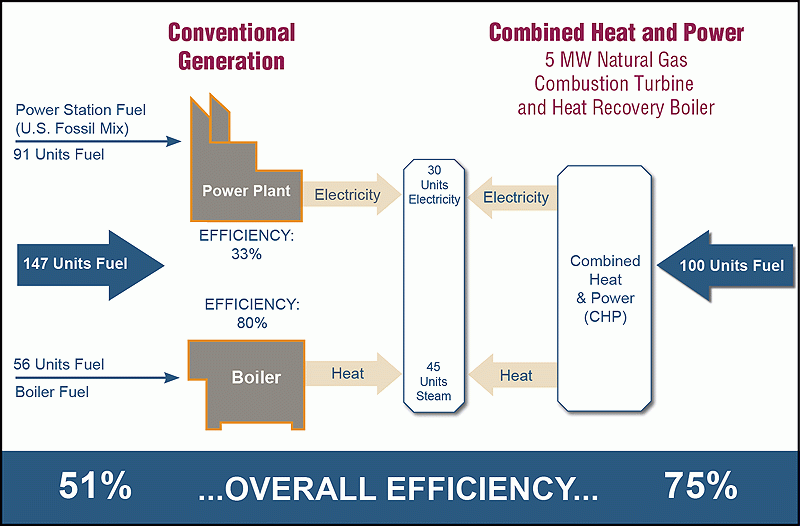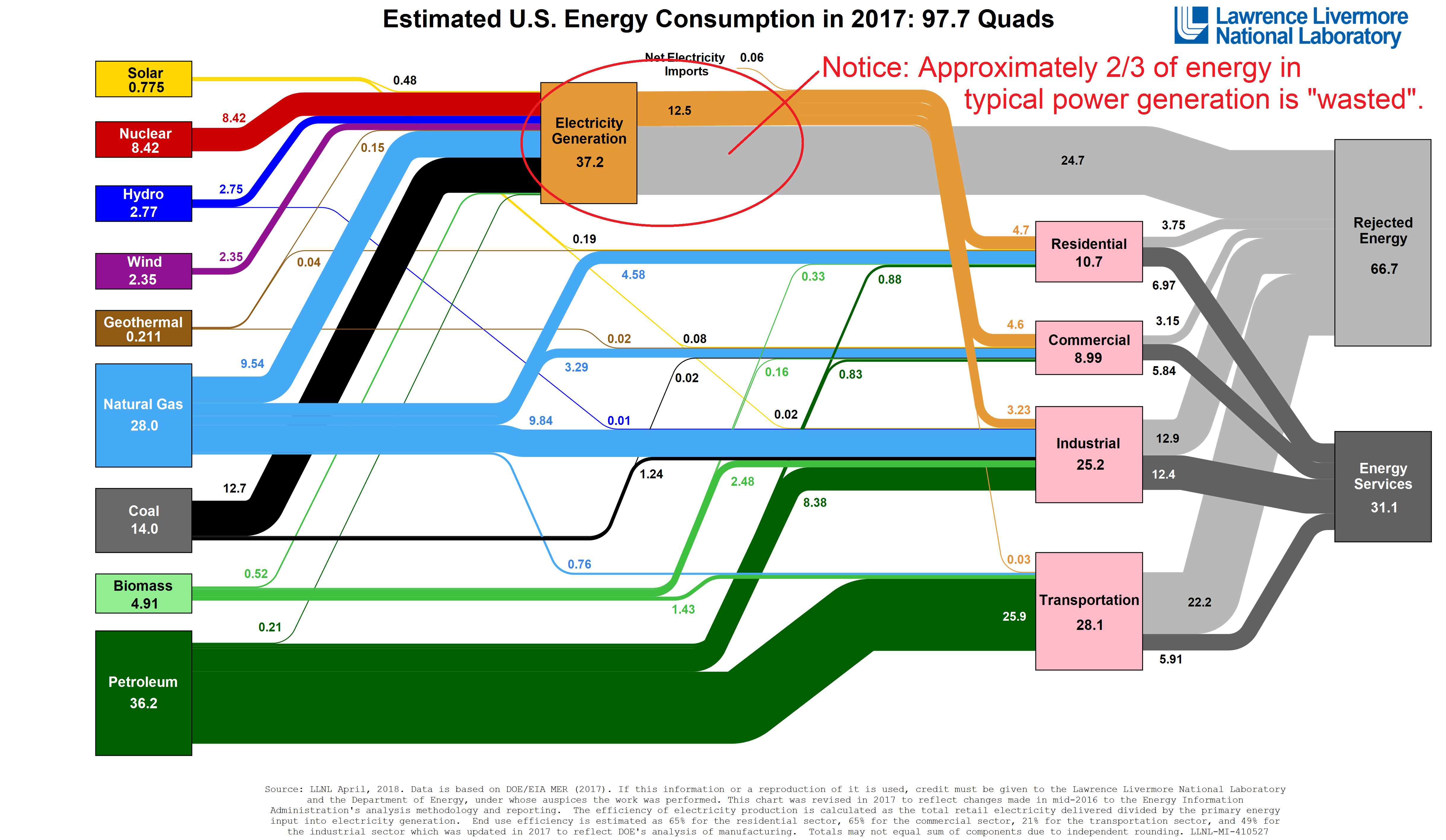Combined Heat and Power (CHP), also known as cogen, or cogeneration, is a fast-growing energy technology in North America and around the world. A large reduction in energy costs (up to about 50%) is the primary reason for this growth.
For typical applications, where there is no change of fuel, the energy cost savings result from dramatically higher system efficiency (power + heat instead of just one or the other), and minimal distribution losses due to power produced on site. In many applications, another cost-saving benefit is peak shaving (the reduction of peak power load bought from the utility). Lowering peak power purchases can greatly reduce costs by avoiding demand rates when they spike.
In areas where electricity costs are high, and natural gas prices are low, CHP yields an excellent payback on investment due to the inherent efficiency in maximizing the utilization of the energy content of the fuel.
How CHP works
As its name suggests, Combined Heat and Power creates both heat and power at the same time.
Various fuels can be used for CHP, such as natural gas, oil, or biomass chips or pellets. The most efficient and cost effective systems use natural gas. Creating power from the combustion of a fuel yields heat as a byproduct.
Ordinarily, most of the heat that’s created during power production, such as at a utility-owned power plant, is wasted. That’s because heat is not transferable over distance the way electric power is. Heat has to be used nearby to where it is produced, and at the time it is produced, or it is lost.
By using the byproduct of power production, heat, CHP uses a higher proportion of the energy content of a fuel than is the case with power production alone.

The sankey diagram below provides another look at how much energy is wasted from the production of power at utilities. That wasted energy is largely in the form of heat, which is what you capture when the CHP power production is at your site. Further energy losses from utilities occur in transmission and distribution (T&D).

Reliability and Resiliency
One of the great advantages of CHP is the capability to provide heat and power to a building even during power outages. This is a great advantage where the grid is not so reliable, or where large storm events like hurricanes, tornadoes, ice storms , and human-caused events can cut power.
Not every CHP unit is capable of providing power during a blackout. The units that can do so have inverters to support this capability.
Typical CHP Applications
As mentioned above, CHP is most attractive in areas where electricity costs are relatively high, and where natural gas prices are comparatively low. Applications such as large multifamily buildings, industrial plants, hospitals, and schools are all good candidates because they all use both heat and power.
Selling Electricity for a Profit with CHP
In some multifamily buildings, power comes in through a single metered connection, from which power is separately metered to individual units. In such cases, it may be possible for the landlord to pay a lower, commercial rate and charge tenants a higher, retail rate. This adds to profits, as well as to the value of the building.
Investigating CHP
CHP is worth investigating to cut energy costs, increase your capacity to produce heat, and to lower your peak power from your utility.
Take a look at the blog post on evaluating your options here.
Additional Resources
The US EPA has an in-depth overview in a 24 page PDF on their website here.

